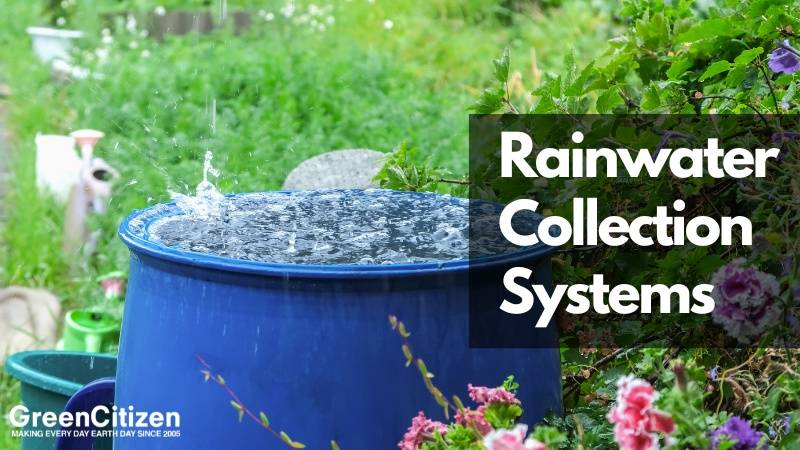Ever since I decided to go green, I’ve found that small steps make a big splash—like setting up a rainwater collection system. Not only does it help the planet, but it also gives me a sense of self-reliance.
Imagine saving water and seeing your water bills shrink! It’s like having a mini water factory right in your backyard.
In a world where every drop counts, collecting rainwater feels like a no-brainer. This isn’t just about installing a few barrels; it’s about stepping into a new way of living—one that’s mindful of every raindrop.
So, if you’re curious about making a difference (and maybe saving a few bucks), dive into this guide. It’s your ticket to a sustainable future, one drop at a time.
What Is A Rainwater Collection System?
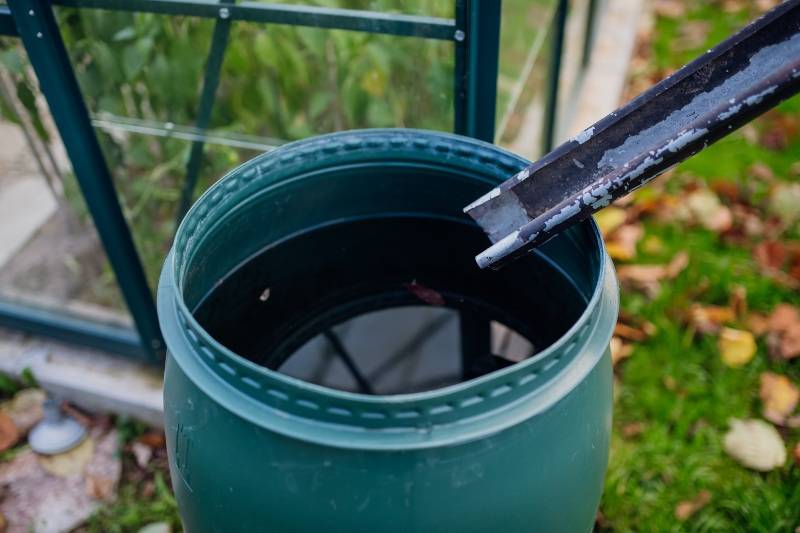
Rainwater harvesting is all about catching and storing rainwater for later use. Think about it: rainwater collection systems capture water from roofs or paved surfaces, channeling it into tanks or barrels. After proper filtration, this water can be used for irrigation, landscaping, and even drinking.
A typical rainwater collection system includes a few key components: a catchment area (like your roof), gutters and downspouts to guide the water, a filtration system to clean it, and a storage tank to hold it. Some setups also have a pump to distribute water and extra filters for drinking.
These systems are great for areas with water shortages or where conserving water is crucial. They help reduce dependence on municipal water, save money, and protect local water sources. Plus, by reducing runoff, they prevent soil erosion and pollution of surface water.
In cities, rainwater harvesting can reduce flooding by easing the burden on drainage systems. Harvested rainwater can also be used for non-drinking purposes, like flushing toilets or washing cars.
Overall, rainwater harvesting is a smart, eco-friendly way to manage water resources and boost sustainability in the face of climate change.
How The Rainwater Harvesting System Works
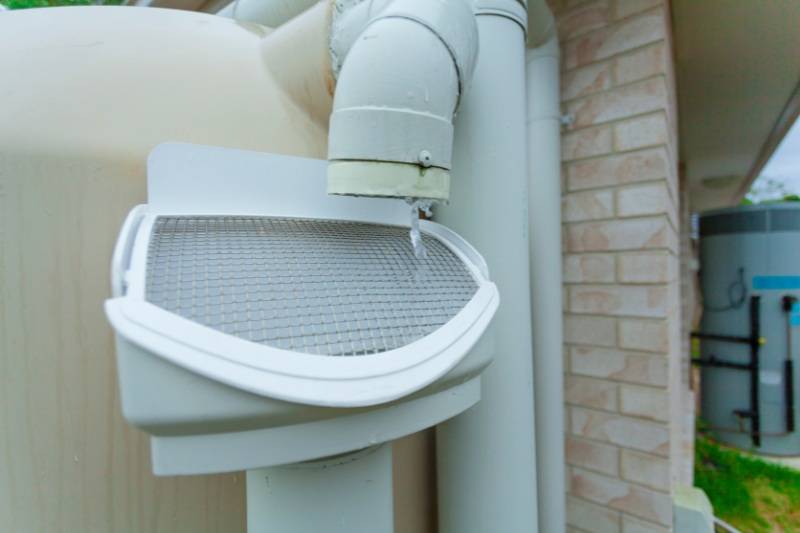
Rainwater harvesting is a smart way to capture, store, and use rainwater from rooftops, paved areas, or other surfaces. This method involves several steps to ensure you make the most of every drop.
Catchment Area
The journey begins with a catchment area, typically your roof. This is where the rainwater first makes contact. The type and material of the roof matter because they affect both the quantity and quality of the collected water. A clean, smooth surface helps gather more and keeps it cleaner.
Conveyance Systems
Once the rainwater is collected, it flows into the conveyance system—think gutters and downspouts. These channels guide the water from the roof to a storage tank. It’s essential to keep them clean and free from debris, or you might end up with a soggy mess instead of a sustainable water supply.
Filtration
As the rainwater travels through the conveyance system, it passes through filters. These filters are crucial for catching leaves, dirt, and other debris. Proper filtration helps maintain high water quality, making sure your stored water is as clean as possible.
Storage Tank
The filtered water is then directed into storage tanks or cisterns, which can be above or below ground. The choice of tank—whether plastic, concrete, or metal—depends on your space, needs, and the amount of water you plan to store. Bigger tanks can store more, but even a small one can make a big difference.
Distribution
After storage, the water can be distributed for various uses through a pump system. This setup allows you to use the harvested rainwater for irrigation, toilet flushing, laundry, and more. With the right treatment, you can even drink it!
Treatment
If you plan to use the rainwater for drinking, additional treatment is required. This could include steps like UV sterilization, chlorination, or advanced filtration to ensure the water is safe for consumption. Treating rainwater properly ensures it meets health standards and is ready for use.

Read More:
Benefits of Rainwater Collection Systems
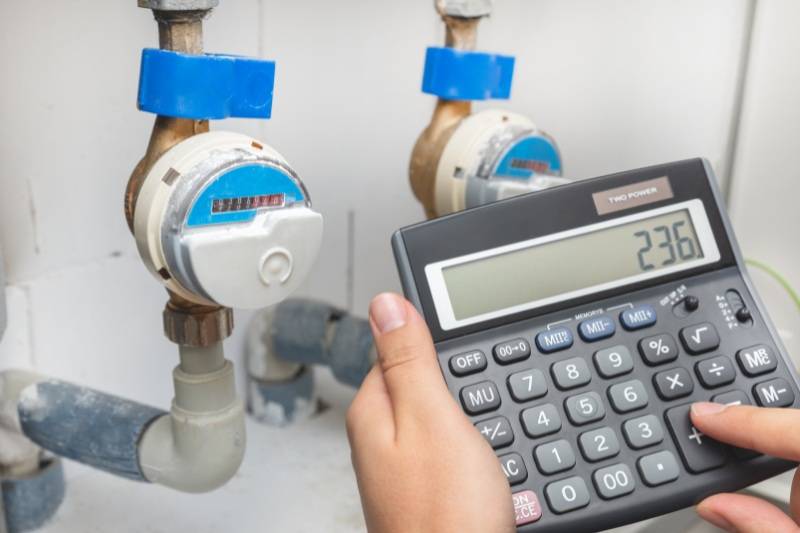
Rainwater collection systems bring a lot of benefits—environmental, financial, and practical. Here’s why adopting this sustainable water solution is a win-win for you and the planet:
- Environmental Conservation: Collecting rainwater reduces our dependence on groundwater and surface water sources. It helps protect local ecosystems and supports the natural water cycle.
- Lower Water Bills: One of the biggest perks? Saving money. By using collected rainwater for things like watering plants or flushing toilets, you can cut down on municipal water use and see a noticeable drop in your water bills.
- Reduced Soil Erosion and Urban Runoff: Rainwater harvesting helps minimize runoff in cities, which often causes soil erosion and pollutes waterways. Capturing rainwater lessens these impacts, keeping our environment cleaner.
- Water Security: In areas prone to water shortages, rainwater collection provides an important backup supply. It boosts water availability, especially during dry spells, making it a reliable source when needed.
- Energy Savings: Treating and transporting city water takes a lot of energy. By using rainwater, you help cut down on the energy used for these services, reducing your carbon footprint.
- Promotes Sustainable Living: Installing a rainwater collection system is a step towards a more sustainable lifestyle. It raises awareness about water conservation and encourages responsible use.
- Healthier Plants: Rainwater is free of the chemicals found in tap water, like chlorine and fluoride. Plants love it, and you’ll see them thrive with natural rainwater.
- Emergency Water Supply: In emergencies or natural disasters, a rainwater collection system can provide a crucial backup, ensuring access to water when it’s most needed.
- Flexibility and Scalability: These systems can be as small or as large as you need, fitting any setting from homes to businesses.
- Boosted Property Value: Homes with sustainable features like rainwater collection systems often have higher property values, aligning with the growing trend of eco-friendly living.
Why Are Rainwater Harvesting Systems Important?
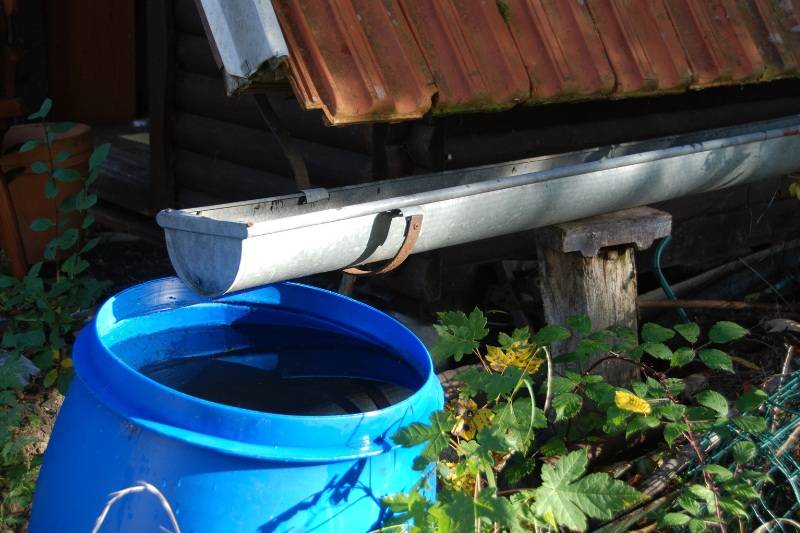
Rainwater harvesting plays a vital role in environmental sustainability and protecting biodiversity. Current water usage statistics are alarming. According to Aqueduct, global water demand is projected to increase by 40-70% by 2040.
Rainwater collection systems conserve water by reducing our reliance on rivers, lakes, and underground aquifers. This is crucial, especially in regions facing water shortages or where natural resources are stressed by overuse and climate change.
By capturing rain, these systems also cut down on runoff, which reduces flooding in cities with lots of concrete. Fewer floods mean less soil erosion, a major problem that affects land quality and farming. Plus, when rainwater soaks back into the ground, it helps recharge groundwater. This is essential for ecosystems, agriculture, and drinking water.
Less stormwater runoff means fewer pollutants like pesticides, fertilizers, and oil entering our waterways. This keeps rivers and lakes cleaner for both wildlife and people.
On a personal note, I’ve noticed more butterflies and birds in my garden since setting up a rainwater collection system. Directing rainwater to natural landscapes supports various plants and animals, promoting local biodiversity.
This approach also helps agriculture by providing a reliable water source for diverse crops, making farming more sustainable. A biodiverse ecosystem is more resilient to climate change, too, helping maintain a balance of species and water supply.

Read More:
What Are The Use Cases for Collected Rainwater?
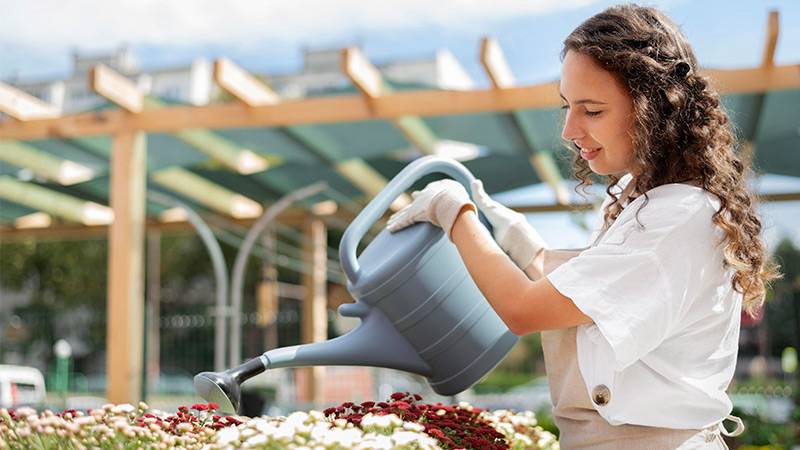
Rainwater can replace tap water for almost all household uses. Think about it—using fresh drinking water to flush toilets or water gardens doesn’t make much sense, especially with increasing water scarcity and a growing population. Harvesting rainwater is an effective way to make your home more sustainable and reduce your impact on the environment.
How can you use harvested rainwater? There are three main categories: watering plants, non-drinking indoor uses, and, with proper treatment, even for drinking. Here are some practical ways to use rainwater:
- Water your garden and lawn manually.
- Hook up your rainwater collection to your sprinkler or drip irrigation system.
- Wash your car or even your pets.
- Top off fountains, ponds, or swimming pools.
- Clean outdoor spaces like driveways and walkways (if you prefer not to use a broom).
- Inside your home, use rainwater for non-drinking purposes like flushing toilets or doing laundry.
- With the right filtration and disinfection, rainwater can be safe for drinking and cooking.
- In factories, rainwater can substitute for treated municipal water in processes that don’t require drinking-quality water.
Switching to rainwater for these tasks not only cuts down on your water bill but also helps conserve our limited freshwater supplies. It’s a simple, effective way to live greener and do your part for the planet.
How Much Rainwater Can You Collect?
One of the coolest things about rainwater harvesting is figuring out how much rain you can actually collect. Knowing this helps you design a rainwater collection system that fits your needs perfectly. So, let’s break down the formula and run through an example.
Collection Potential Formula:
Collection Potential = Rainfall (in inches) × Collection Area (in square feet) × 0.623 × Collection Efficiency
Here’s what the formula means: the constant 0.623 converts inches of rain over a square foot into gallons. Collection efficiency, usually between 80% and 90%, accounts for losses from evaporation, leaks, and initial rainwater diversion.
Example Calculation:
Imagine you have a roof that’s 1,200 square feet, and you live where it rains about 35 inches a year. With a collection efficiency of 85%, your rainwater potential would be:
Collection Potential = 35 × 1,200 × 0.623 × 0.85 = 22,240 gallons per year
How to Estimate Your Rainwater Harvesting Systems
- Measure Your Roof Area: Calculate your roof’s length and width to get the total square footage.
- Find Your Annual Rainfall: Look up your local yearly rainfall in inches (your local weather service can help).
- Use the Formula: Insert your numbers into the formula with an estimated collection efficiency (start with 85%).
- Calculate Your Potential: This gives you a rough idea of the rainwater you can harvest annually.
Knowing these numbers is vital. If you’re mainly using rainwater for gardening, this will help you decide how big your storage tank should be. Plus, it shows how much of your household water use could be covered by rainwater, helping you move toward sustainable water use.
Keep in mind, this is an estimate. Weather changes and your system’s design and upkeep can affect actual collection amounts. Still, it’s a great starting point for anyone looking into rainwater harvesting as a green solution.
Different Methods For Collecting Rainwater
1. Barrel System

A barrel system is a simple and affordable way to collect rainwater. You place a barrel or container at the base of your roof’s downspout to catch rain. I set up one of these to water my garden and wash my car, and it works great without using tap water. This method is perfect for small-scale rainwater harvesting and a fun DIY project.
- Low cost
- Easy to install
- Saves space
- Reduces runoff
- Limited storage
- Needs frequent cleaning
- Prone to overflow
- Not for drinking without filtration
2. Dry System
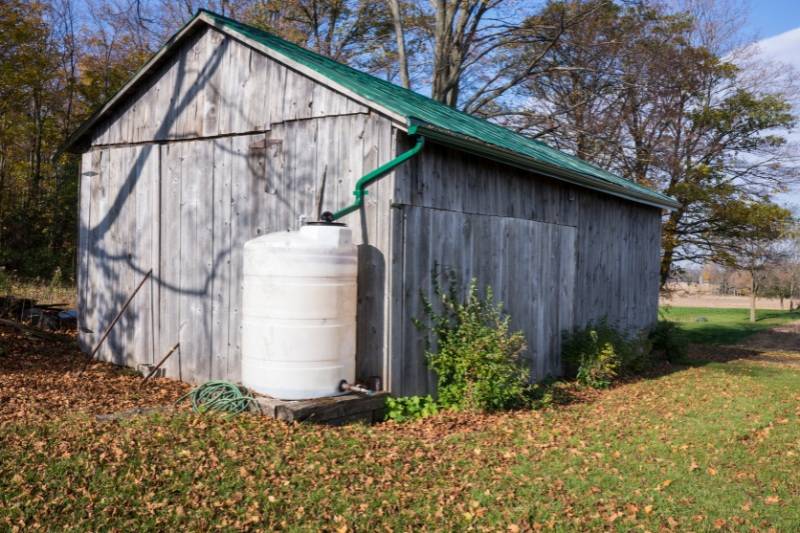
The dry system uses larger tanks than a barrel and is called “dry” because pipes empty after the rain stops. This system worked well for me when I needed more water but wanted to keep things simple and low-maintenance.
- Stores more water
- Easy maintenance
- Lower contamination risk
- Needs more space
- Visible setup
- Depends on gravity
3. Wet System
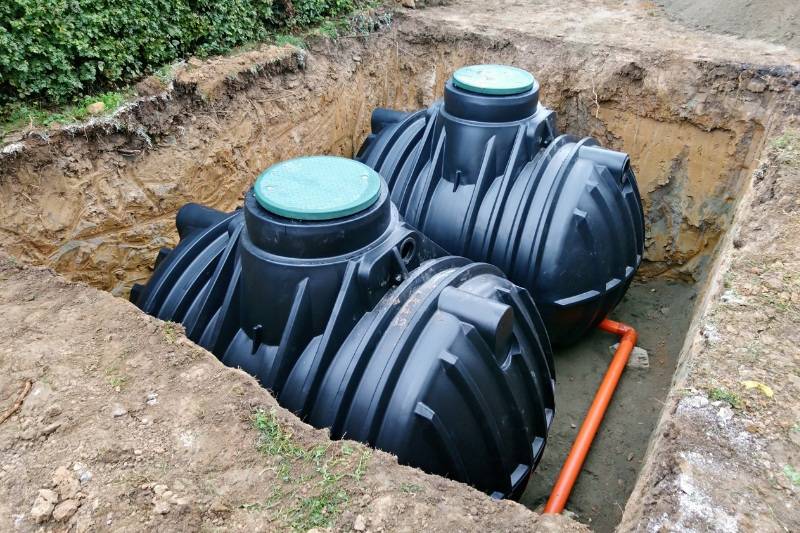
A wet system keeps pipes underground and full of water after rain. It collects water from multiple downspouts into a single underground tank. This setup was ideal when I wanted a hidden, high-capacity solution for my home.
- Hidden underground
- Collects from multiple spots
- High storage capacity
- Complex installation
- Higher cost
- Harder to maintain
- Risk of contamination
Each system has unique benefits and drawbacks. Pick the one that matches your needs, budget, and space!
Creating Your Own DIY Rainwater Collection Systems
Tools and Materials Needed
- Gutters and downspouts
- Rain barrel or storage tank
- Drill and bits
- Saw (for cutting downspouts or pipes)
- Spigot and sealant
- Screen or filter
- Flexible downspout extender (optional)
- Overflow pipe or hose
- First-flush diverter (optional)
- Measuring tape and level
- Protective gloves and safety glasses
How to Create a DIY Rainwater Collection System
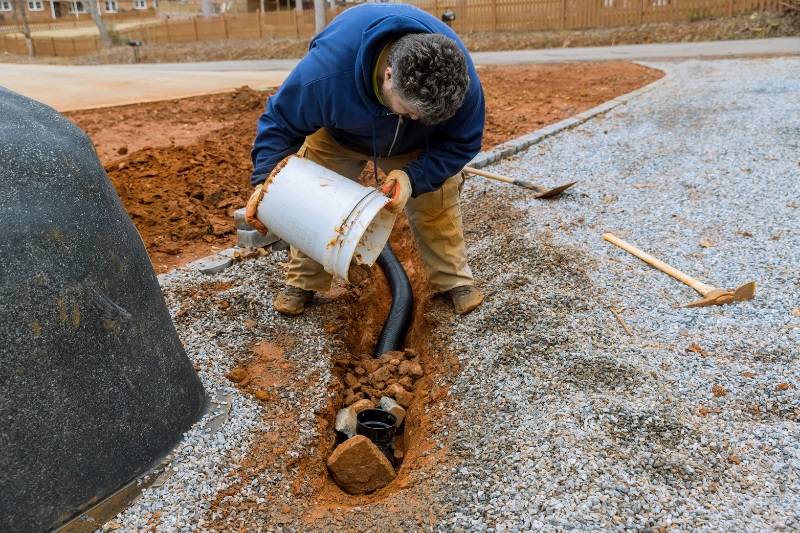
1. Choose a Collection Area
Pick a spot on your roof where rainwater can easily flow. Most people use their rooftops because they offer a large area for capturing rain.
2. Set Up Gutters and Downspouts
If you don’t already have them, install gutters along the roof’s edge, making sure they tilt slightly toward the downspout. This helps water flow naturally. Attach a downspout to guide the water into your storage container.
3. Prepare the Storage Container
Pick a rain barrel or a larger tank based on how much water you want to store. Ensure it’s food-grade and UV-resistant to prevent algae. Install a spigot at the bottom for easy access to the water. You might need to drill a hole and use a watertight fitting.
4. Connect the Downspout to the Container
Cut the downspout so it directs water into the barrel or tank. Use a flexible downspout extender if needed. Add a screen or filter at the connection to keep out leaves, debris, and insects.
5. Install an Overflow System
Attach an overflow pipe or hose near the top of the container to divert extra water away from your home’s foundation during heavy rain.
6. Add a First-Flush Diverter (Optional)
This device removes the first few gallons of rain, which can contain dirt and pollutants from the roof.
Cautions and Mistakes to Avoid
- Make sure gutters slope 1/4 inch for every 10 feet. Too flat and water won’t flow properly.
- Always use a screen or filter. This prevents debris from clogging the system and contaminating the water.
- Install an overflow system to avoid water damage. This stops water from spilling over and harming your foundation.
- Use food-grade, UV-resistant containers only. This prevents chemicals from leaching and stops algae from growing.
- Ensure all seals are tight around the spigot and overflow pipe. Tight seals prevent leaks.
- Place the barrel on a stable, elevated base. This makes water flow easier and prevents tipping.
- Clean gutters, downspouts, and containers regularly. This prevents clogs and lets you check for cracks or leaks.
Frequently Asked Questions (FAQ)
The most efficient way to collect rainwater is by using a well-designed system with a large, clean catchment surface (like a roof), efficient gutters, a first flush diverter for water purity, and a large storage tank. Properly maintaining this system ensures maximum collection and quality of rainwater.
Rainwater harvesting can involve high initial setup costs, requires regular maintenance to prevent contamination, and is dependent on rainfall patterns, which can be unreliable in certain regions. Additionally, storage space for large tanks might be an issue, particularly in urban environments.
Rainwater harvesting systems are worth it for those seeking to reduce water bills, increase sustainability, and have water independence. However, their value depends on local rainfall patterns, the cost of installation and maintenance, and individual water usage needs.
To prevent rainwater from stagnating, regularly clean and maintain the collection system, use covered storage tanks, and include features like first flush diverters and filters. Circulation systems or adding safe mosquito repellents can also help keep the water moving and free from pests.
Drinking rainwater directly is not safe due to potential contaminants. However, with proper filtration and purification, including boiling or using advanced filters to remove pollutants and pathogens, rainwater can be made safe for drinking. Always ensure it meets local water quality standards before consumption.
The cheapest method of rainwater harvesting is using simple barrels or buckets placed under downspouts to collect rainwater from rooftops. This basic setup is cost-effective, easy to implement, and requires minimal equipment, making it accessible for most households.
Stored rainwater can be used for plants for up to a week, though with proper storage conditions like a clean, dark, and cool environment, it can last several weeks. Regularly checking for algae growth and contamination is crucial to maintain its suitability for plants.
Yes, you can save rainwater for plants. It’s an excellent, eco-friendly option for irrigation, as rainwater is free of chlorine and other chemicals found in tap water, which can be beneficial for plant health. Ensure proper storage to keep the water clean and safe for use.
Rainwater and spring water have different benefits. Rainwater is soft, free of ground minerals, and good for plants. Spring water, naturally filtered through rock, is rich in beneficial minerals and ideal for drinking. The better choice depends on the intended use and local water quality.
A well taps into underground water sources, providing consistent water supply, but its water quality varies with the aquifer. Rainwater collection captures and stores rain from surfaces like roofs, offering a renewable supply dependent on weather patterns, with typically cleaner initial water that still requires treatment for potability.
Conclusion
Setting up a DIY rainwater collection system is a practical way to conserve water and promote sustainability. By carefully choosing your setup, using the right materials, and maintaining your system, you can reduce water waste, lower costs, and support a greener lifestyle, benefiting both you and the environment.
